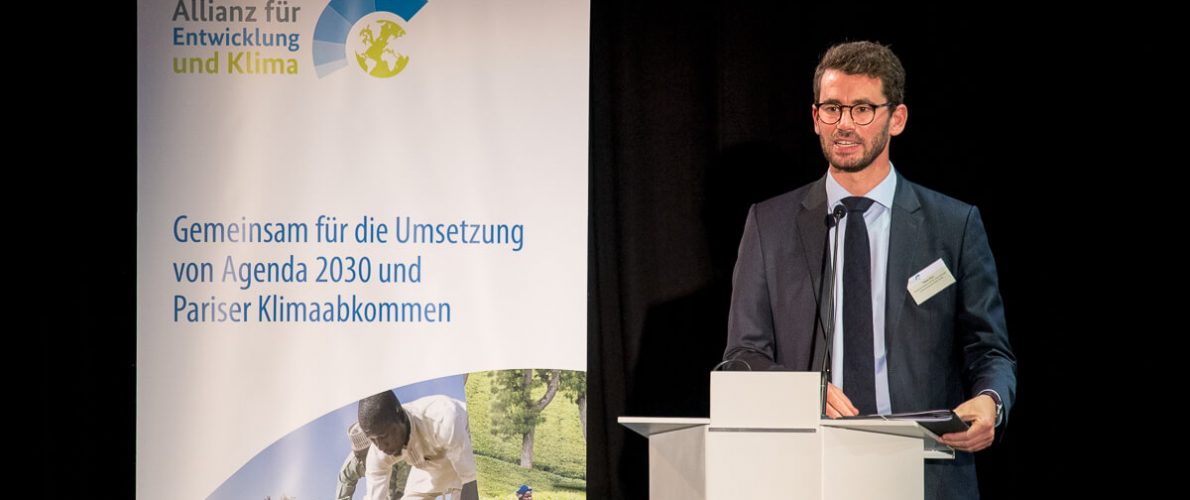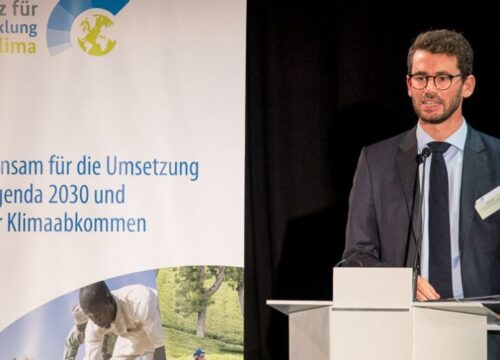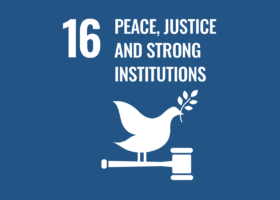Founded in 2018 by the German Federal Ministry for Economic Cooperation and Development (BMZ), the Development and Climate Alliance links sustainable development with global climate protection. The well over 900 supporters strive for climate neutrality by avoiding and reducing their greenhouse gas emissions and by compensating any remaining emissions. Last year, the alliance was transferred into a foundation.

How come the Alliance for Development and Climate decided to become a foundation? What was the process?
The Alliance for Development and Climate was designed in 2018 on behalf of BMZ, together with the Research Institute for Application-Oriented Knowledge Processing (FAW/n). GIZ manages the secretariat of the alliance and set up a project specifically to support the alliance. The initiative advanced very well, and we now have more than 900 members, including companies and other institutions.
Particularly the business community signaled its great interest in maintaining and expanding the alliance. Therefore, BMZ decided to transform the structure of the alliance and institutionalize it. The until then loose association became a foundation.
The 2020 annual report was published at the end of March. What are the most important changes and progresses?
A central goal of the alliance is to advocate for climate protection and sustainable development, not just by providing information, but by taking concrete action. In 2020, we took stock of the previous year’s activities for the first time. Based on this, our brand-new annual report represents a cheerful message: the members not only increased climate protection initiatives in their own operations, but also compensated more than in the previous year and more than they had announced.
While around 2.5 million metric tons of CO2 were offset as part of the alliance in 2019, this figure had already risen to 3.6 million metric tons by 2020 – an increase by approximately 40 percent. A growing proportion of the CO2 tons was invested in gold standard certificates, which guarantee particularly reliable sustainable development in the projects.
Last year, we also saw a rise in the number of projects that support nature-based solutions, for example reforestation and renaturation projects with a strong focus on preserving biodiversity. Around half of all projects carried out by members support nature-based solutions – in the previous year, this was the case for only one third.
Finally, last year we successfully held our general assembly, workshops and online seminars virtually and published different studies. We have a strong social media presence and have launched a media campaign. Our content is well received, and the alliance is accepted as a “brand”.
Why is a multi-stakeholder partnership approach beneficial for the alliance?
Before the alliance was founded, we analyzed different approaches in relation to CO2 offsetting and stakeholder involvement that would be of interest to BMZ. The multi-stakeholder partnership (MSP) was one of several options. In dialogue with BMZ and individual key players, it quickly became clear that the participatory approach, i.e. working together to achieve a goal, was a great fit. In a first meeting with around 50 participants, we experienced an enormously positive response. The participants were pleased to be able to contribute their views on an equal footing.
This encouraged us to develop our criteria catalogue – a document which sets out what kind of projects may be invested in – together with all interested members. One of the strengths of an MSP is that consensus-building takes place among stakeholders on an ongoing basis, not just on specific occasions.
Of the more than 900 supporters, around two-thirds come from the private sector, and two-thirds of them are small and medium-sized enterprises. Associations are also represented, as are municipalities and authorities, private individuals and NGOs. What all these players have in common is that they want to contribute to climate neutrality. Outside the alliance, there is no other forum on this topic that brings together such a wide range of players. That is what is special about this MSP: It brings together different partners to make the sector of CO2-offsetting more transparent.
Having to find the lowest common denominator in an MSP can be a difficult exercise sometimes, but the fact that the exchange is wanted and pursued by all participants shows that the MSP approach has proven itself as successful organizational form.
Es ist an der einen oder anderen Stelle auch schwierig, immer einen kleinsten gemeinsamen Nenner zu finden. Aber dass der Austausch von allen Beteiligten weiterhin gewollt und betrieben wird, zeigt, dass die MAP als Organisationsform sich bewährt hat.



